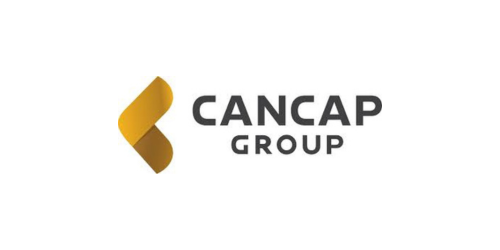Auto Finance 2.0: Is the Pie Big Enough For All?
Abstract: Traditional banks and fintechs are reshaping auto finance, not as direct competitors but as complementary forces. While banks offer stability, deep capital reserves, and consumer trust, fintechs thrive on speed, automation, and innovation, particularly in underserved markets. AI and machine learning are transforming risk assessment, fraud detection, and credit scoring, allowing fintechs to approve loans faster without necessarily increasing risk. However, banks emphasize the importance of balancing efficiency with responsible lending, particularly in non-prime markets. The future of auto finance lies in collaboration—banks integrating fintech solutions to enhance digital lending while maintaining regulatory strength. Indirect lending through dealerships remains relevant but needs modernization to improve transparency and customer experience. Ultimately, innovation, regulation, and strategic partnerships will define the industry’s evolution.

Raymond O’Kane: Today, we’ll explore how traditional banks and fintechs are reshaping auto finance. Are fintechs disrupting the industry, or is there room for both models to coexist? How will traditional banks adapt to this evolving landscape?
Alain, critics argue that legacy banks are too slow and bureaucratic to compete with fintech’s seamless digital experiences. How do you respond? Is the traditional bank model sustainable?
Alain Henry: Banks have been around for 175 years because we adapt. We’ve weathered economic storms, maintained strong capital reserves, and earned consumer trust. Yes, we have regulatory constraints, but they exist to protect customers and ensure long-term stability.
We’re constantly modernizing—combining legacy systems with cutting-edge technology. Efficiency can be a challenge, but trust and security remain our top priorities. It’s by design, not a flaw.
Marcos, banks have decades of experience, deep customer trust, and massive lending power. How can fintechs realistically compete?
Marcos Lopez: Fintechs succeed by leveraging speed, automation, and niche market opportunities. Traditional banks have a cost-of-capital advantage, but fintechs thrive in areas where agility is needed—particularly in underserved or mispriced markets.
We use data, AI, and alternative credit scoring to enhance risk assessment, often making lending decisions faster and with better accuracy. Traditional banks have started integrating these tools, but fintechs innovate more aggressively because we aren’t weighed down by legacy systems.
A recent study suggests that fintechs approve loans 30% faster than traditional banks. Are we sacrificing risk for speed?
Amy Sullivan: Not necessarily. Speed and responsible lending aren’t mutually exclusive. At CanCap, we built a strong risk and compliance framework from day one.
Technology allows us to make data-driven decisions quickly while maintaining rigorous risk assessments. Traditional banks are also highly automated, but fintechs have an edge in process efficiency and seamless customer experiences.
Alain Henry: We must find a balance. In prime lending, automation enables near-instant approvals. However, non-prime lending requires a deeper manual review—and for good reason. While speed is valuable, lenders should prioritize accurate decisioning over mere efficiency.
AI and machine learning are transforming risk assessment. How are fintechs and banks using this technology?
Marcos Lopez: AI is a game changer for fraud detection, credit scoring, and document verification. For example, AI can detect inconsistencies in bank statements far more accurately than humans.
Traditional processes rely too heavily on manual checks. Automating these steps improves accuracy and reduces human error. This is particularly useful in fraud prevention, where AI can spot forged pay stubs or income mismatches in real time.
Amy Sullivan: The key is combining AI with human oversight. AI improves decision-making, but risk teams are still crucial in interpreting data and applying nuanced judgment.
Auto financing has traditionally been indirect—lenders working through dealerships. Should we be shifting back to direct lending?
Marcos Lopez: Not necessarily. Indirect lending works, but it needs modernization. Dealers should be able to integrate with lenders more seamlessly, offering pre-approved loans and transparent rates at the start of the buying process.
Consumers currently feel disempowered in F&I offices. If lenders allow them to compare rates earlier, the process becomes more transparent and customer-friendly.
Alain Henry: Consumers do compare rates, but the dealer relationship remains vital. We need to enhance dealer partnerships, not eliminate them. A hybrid model—where dealers and lenders work together to provide better visibility and digital access—is the future.
With rapid industry changes, how do banks and fintechs coexist?
Amy Sullivan: The lines between banks and fintechs are blurring. Banks are investing in digital transformation, while fintechs are becoming more established and compliant. The best path forward is collaboration, not competition.
Alain Henry: Absolutely. Banks don’t have to build everything in-house—we can partner with fintechs to integrate innovative lending tools while maintaining regulatory strength and trust.
Marcos Lopez: I agree. Banks offer stability and reach, while fintechs provide agility and modern tech. Working together, we can create better financial products and customer experiences.
Raymond O’Kane: Today’s discussion highlights that auto finance is evolving fast, but banks and fintechs are both essential players. Innovation, regulation, and collaboration will shape the future.
A big thank you to Amy, Alain, and Marcos for their insights and to our audience for engaging in this critical conversation!
Let’s continue working together to drive the future of auto finance forward!
Sign up for our 2026 Summit Series







